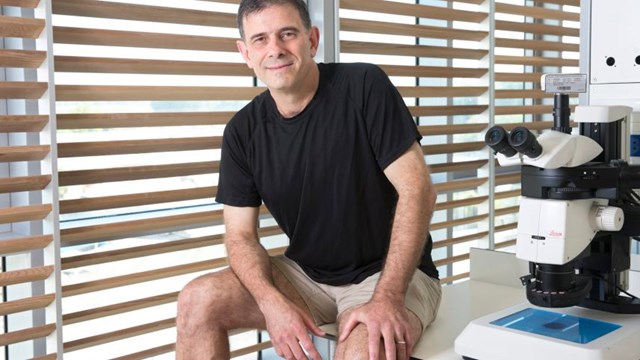Weizmann Institute professor Yoav Soen sheds light on nature’s way of facing unexpected problems

Prof. Yoav Soen sounds almost angry when he talks about the evolutionary concept of natural selection – or, more precisely, its total acceptance – suggesting it blinds people to thinking more broadly. Instead, they simply embrace the theory of evolution developed more than 150 years ago by Charles Darwin.
The blind allegiance to natural selection is a worldwide phenomenon, which is reflected in how research is conducted and scientific questions are explained, says the biomolecular scientist at the Weizmann Institute of Science, Rehovot.
“Natural selection has become something similar to religious faith – something that provides an answer for everything,” Soen says with frustration.
It’s hard to point an accusing finger at the ranks of believers in natural selection. After all, there is great logic to the idea that adaptation to surroundings is a process that occurs over a number of generations – through which the characteristics essential to survival are bequeathed to the next generation. The concept is embraced as the key to understanding the development of life on Earth over a period of at least three billion years.
That’s particularly true if you adopt the belief that evolution serves to further the survival of particular forms of life and enables them to multiply. Proponents of natural selection claim that nature is replete with examples in support of the theory.
Darwin developed the theory of natural selection in the mid-19th century while studying adaptation of large numbers of species, rather than focusing on each more specifically, and the theory alone does not fully explain the mechanisms involved in adaptation and changes in nature, Prof. Soen tells Haaretz. Evolution, he argues, is not limited to families of plants and animals, but also occurs inside individual living things – whether they are, say, cells, plants, horses or people.
The process of change doesn’t work like a Swiss watch, he says. Instead, it’s imprecise, taking unexpected directions.
The Weizmann Institute professor actually gravitated to his field of study from the world of physics, gaining his PhD in physics from the Technion – Israel Institute of Technology, Haifa, followed by postdoctoral work in biochemistry at Stanford University, California. He opened his Weizmann Institute lab in 2006. Soen says “amazement over the complexity of biological processes” was responsible for his shift in focus.
Soen’s surprising take on evolution – adaptive improvisation, as the theory is known – is the result of research conducted with Prof. Naama Brenner from the chemical engineering department at the Technion, and Technion doctoral student Hallel Schreier. It was published this April in the journal Nature Communications.
In putting forward their theory, Soen and his colleagues have made use of a mathematical model to explain how organisms use random changes to resolve unexpected problems – the type that occur in all living things on an ongoing basis. For example, by conservative estimates, the DNA of each cell in the human body is exposed on average to about 50,000 different kinds of damage every day, which can affect its functioning. It’s a process that on a cumulative basis leads to random changes in all of the body’s more than ten trillion cells.
Improvising can also kill
The theory of adaptive improvisation holds that the capacity to improvise and manage the unexpected is the secret of survival, though Soen acknowledges that unlimited random improvisation would lead to biological destruction. The question, he says, is how the body can effectively use randomness “without killing you long before a solution is found for the unexpected problem.”
The researchers developed a model to study how a cell responds to arbitrary demands that it has no response for in its regular set of tools, and examined whether random changes lead to adaptive solutions. What they found was that such adaptation was possible even on a more complex level.
“As we have also learned from chaos theory and thermodynamics, the inability to precisely forecast and describe the situation at any given time doesn’t mean we can’t find a general set of tools to make it possible to predict some of the significant characteristics of the system,” says Soen.
“In many instances, it’s possible to forecast results even without a microscopic description of the system’s particles,” he continues. “It’s a kind of adaptation that is lacking in biology.”
The model also explains how cancer cells become resistant to new treatments, Soen notes.
Soen may deal with improvisation in his research, but he explains his ideas in an organized and reasoned manner. Randomness and improvising are an inseparable part of the process of change and adaptation in nature, he says. They don’t involve total chaos. “The system is built in advance to limit improvisation to places and processes that are not too dangerous, and this structure leads to improvisation that tends to help you without significantly endangering you. These are general characteristics without which it simply wouldn’t work,” Soen declares.
